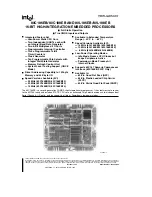
Live Time Correction With a Live Source
To compensate for events rejected due to pile-up and processing time, a system dead
time is derived by the live-time correction function. The dead time signal controls the
MCA “Live-Time” clock which extends the acquisition time by the appropriate
amount.
The accuracy of the Live Time Correction (LTC) deployed on both traditional analog
electronic and the 9660 Digital Signal processor is dependent on the operation of the
Fast Discriminator (fast channel) and the pulse evolution time or dead time of the
shaped signal (slow channel). In the case of the 9660 DSP, the slow channel is the dig-
ital filtered trapezoid signal. Accurate Live Time Correction is obtained when the en-
ergy threshold and dynamic range of the fast channel and slow channel are the same.
In practice however, the energy threshold of the fast channel is forced to be much
higher compared to the slow channel. In order to obtain good pulse pair or timing res-
olution, the fast channel employs little or no noise filtering. As a result, the signal to
noise ratio is much worse, requiring a higher energy/noise threshold.
To optimize the LTC accuracy on traditional systems, the ADC LLD is adjusted or op-
timized to normalize the energy threshold of the slow and fast channels. However, this
has the undesirable effect of affecting the spectral low energy cutoff.
User’s Manual - ICN 9231014G
49
Live Time Correction With a Live Source
Figure 24 Comparing
57
Co Spectra w/PUR On and Off
















































